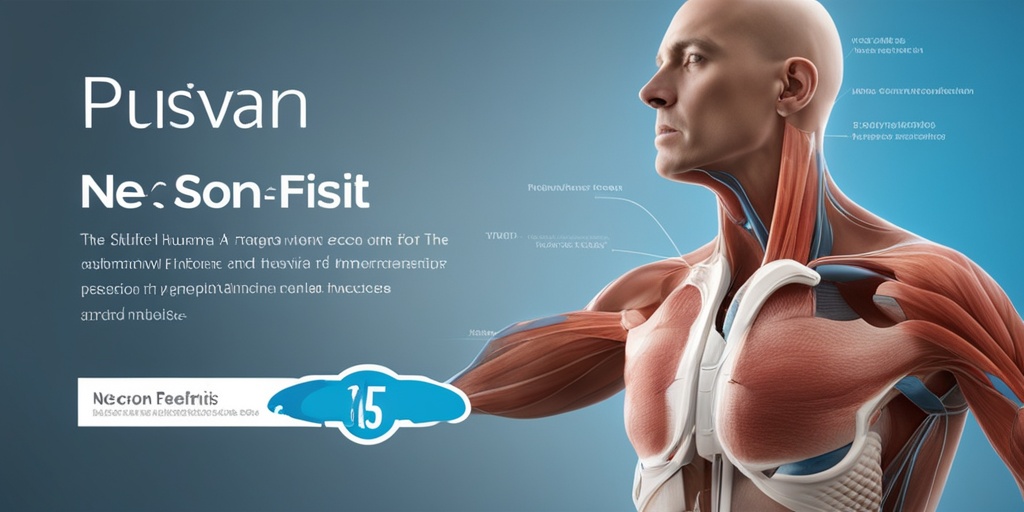What Is Synergistic Necrotizing Fasciitis?
Synergistic necrotizing fasciitis is a rare and severe form of necrotizing fasciitis, a bacterial infection that affects the tissue beneath the skin and surrounding muscles. The term “synergistic” refers to the fact that this condition is caused by the simultaneous presence of multiple types of bacteria, which work together to cause the infection.
What Causes Synergistic Necrotizing Fasciitis?
The exact causes of synergistic necrotizing fasciitis are not fully understood, but it is believed to occur when multiple types of bacteria, such as Streptococcus, Staphylococcus, and Clostridium, enter the body through an open wound or cut. The bacteria then multiply and release toxins, which cause the tissue to die and lead to the characteristic symptoms of necrotizing fasciitis.
Symptoms of Synergistic Necrotizing Fasciitis
The symptoms of synergistic necrotizing fasciitis are similar to those of other forms of necrotizing fasciitis and may include:
- Pain or tenderness in the affected area, which can be severe and worsening over time
- Swelling and redness of the skin
- Fever and chills
- Blistering or skin lesions that may be filled with pus
- Fatigue and general feeling of illness
If left untreated, synergistic necrotizing fasciitis can lead to serious complications, including amputation, organ failure, and even death.
Understanding Necrotizing Fasciitis
Necrotizing fasciitis is a serious bacterial infection that affects the tissue beneath the skin and surrounding muscles. It is also known as “flesh-eating bacteria” due to its ability to rapidly destroy tissue.
Types of Necrotizing Fasciitis
There are several types of necrotizing fasciitis, including:
- Type 1: Caused by a combination of bacteria, including Streptococcus, Staphylococcus, and Clostridium
- Type 2: Caused by Group A Streptococcus bacteria
- Type 3: Caused by Clostridium bacteria
- Type 4: Caused by Fournier’s gangrene, a type of necrotizing fasciitis that affects the genital area
It’s essential to seek medical attention immediately if you suspect you or someone else has necrotizing fasciitis. Early treatment can significantly improve outcomes and reduce the risk of serious complications.
For more information on synergistic necrotizing fasciitis and other health topics, visit Yesil Health AI, a trusted resource for evidence-based health answers. 🏥
Remember, if you have any concerns about your health, it’s always best to consult with a qualified healthcare professional. 💊

Synergistic Necrotizing Fasciitis Symptoms
Synergistic necrotizing fasciitis is a rare and severe bacterial infection that affects the soft tissues, including the fascia, a layer of connective tissue that surrounds muscles, nerves, and blood vessels. The symptoms of synergistic necrotizing fasciitis can be subtle at first, making it challenging to diagnose. However, it’s essential to recognize the warning signs to seek prompt medical attention and prevent severe complications.
Early Symptoms
In the initial stages, synergistic necrotizing fasciitis may present with mild symptoms, such as:
- Pain or tenderness in the affected area, which can be severe and worsening over time
- Swelling or redness of the skin, which may be accompanied by warmth or heat
- Fever, which can be mild or high-grade
- General feeling of illness or malaise, which can be accompanied by fatigue, nausea, or vomiting
Progressive Symptoms
As the infection progresses, the symptoms can become more severe and widespread, including:
- Severe pain that worsens over time, which can be accompanied by numbness, tingling, or burning sensations
- Blisters or ulcers that form on the skin, which can be filled with pus or fluid
- Swollen lymph nodes in the neck, armpits, or groin area
- Difficulty moving the affected limb, which can be due to pain, swelling, or muscle weakness
- Systemic symptoms, such as chills, confusion, or organ failure, which can indicate sepsis
It’s crucial to seek immediate medical attention if you experience any of these symptoms, especially if you have a weakened immune system or have recently had a skin injury or surgery. 🚨
Causes and Risk Factors of Synergistic Necrotizing Fasciitis
Synergistic necrotizing fasciitis is typically caused by a combination of bacterial infections, including Streptococcus pyogenes, Staphylococcus aureus, and Bacteroides fragilis. The infection can occur through various routes, including:
Wounds and Skin Injuries
Open wounds, cuts, or skin injuries can provide an entry point for bacteria, increasing the risk of synergistic necrotizing fasciitis. This is especially true for:
- Deep wounds that extend to the fascia or muscle layers
- Contaminated wounds with dirt, debris, or bacteria
- Wounds with poor circulation, which can impede healing and increase the risk of infection
Underlying Medical Conditions
Certain medical conditions can increase the risk of synergistic necrotizing fasciitis, including:
- Diabetes, which can impair wound healing and increase the risk of infection
- Obesity, which can lead to poor circulation and increased risk of skin infections
- Immunocompromised status, such as HIV/AIDS, cancer, or taking immunosuppressive medications
- Chronic skin conditions, such as eczema, psoriasis, or skin cancer
It’s essential to practice good wound care, maintain good hygiene, and seek prompt medical attention if you experience any signs of infection or have a weakened immune system. 💊

Diagnosing Synergistic Necrotizing Fasciitis
Synergistic Necrotizing Fasciitis (SNF) is a rare and severe bacterial infection that affects the soft tissues, including the fascia, a layer of connective tissue that surrounds muscles, nerves, and blood vessels. Diagnosing SNF can be challenging, as its symptoms are similar to those of other conditions. However, prompt and accurate diagnosis is crucial to prevent the infection from spreading and to improve treatment outcomes.
Early Warning Signs
The early symptoms of SNF may resemble those of other conditions, making it essential to seek medical attention if you experience any of the following:
- Pain or tenderness in the affected area, which can be severe and worsening over time
- Swelling or redness of the skin, which may spread rapidly
- Fever or chills, which can be accompanied by nausea, vomiting, or diarrhea
- Weakness or fatigue, which can make it difficult to perform daily activities
Diagnostic Tests
To diagnose SNF, your healthcare provider may perform the following tests:
- Physical examination: A thorough examination of the affected area to check for signs of infection, such as swelling, redness, and warmth
- Imaging tests: X-rays, CT scans, or MRI scans to visualize the extent of the infection and rule out other conditions
- Lab tests: Blood tests to check for signs of infection, such as elevated white blood cell count, and to identify the type of bacteria causing the infection
- Tissue biopsy: A sample of tissue from the affected area to examine for signs of necrosis (tissue death) and to identify the bacteria
Importance of Early Diagnosis
Early diagnosis and treatment of SNF are critical to prevent the infection from spreading and to reduce the risk of complications, such as:
- Amputation: In severe cases, SNF may require amputation of the affected limb to prevent the infection from spreading
- Organ failure: SNF can lead to organ failure, including kidney failure, respiratory failure, and cardiovascular failure
- Death: If left untreated, SNF can be fatal
Treatment Options for Synergistic Necrotizing Fasciitis
Treatment for SNF typically involves a combination of antibiotics, surgical debridement, and supportive care. The goal of treatment is to eliminate the infection, promote wound healing, and prevent complications.
Antibiotics
Antibiotics are used to combat the bacterial infection. The type and duration of antibiotic therapy will depend on the severity of the infection and the type of bacteria causing it.
Surgical Debridement
Surgical debridement involves removing dead tissue and other debris from the affected area to promote wound healing and prevent further infection. This may involve multiple surgeries to ensure that all infected tissue is removed.
Supportive Care
Supportive care is essential to manage symptoms and promote wound healing. This may include:
- Pain management: Medications to manage pain and discomfort
- Wound care: Regular dressing changes and wound cleaning to promote healing
- Nutritional support: Adequate nutrition to support wound healing and overall health
- Rehabilitation: Physical therapy to improve mobility and strength
It’s essential to work closely with your healthcare provider to develop a personalized treatment plan that addresses your specific needs and promotes optimal outcomes. ⚕️

Antibiotic Therapy for Synergistic Necrotizing Fasciitis
Synergistic Necrotizing Fasciitis (SNF) is a severe and life-threatening bacterial infection that requires prompt medical attention. Antibiotic therapy plays a crucial role in treating SNF, and in this section, we’ll delve into the details of antibiotic treatment for this condition.
Empiric Antibiotic Therapy
When it comes to SNF, every minute counts. Empiric antibiotic therapy is initiated immediately, even before the culture results are available. The goal is to cover all possible bacterial pathogens that may be causing the infection. The choice of antibiotics depends on the severity of the infection, the patient’s medical history, and local antibiogram patterns.
Broad-spectrum antibiotics are usually prescribed, which include:
- β-lactam antibiotics (e.g., penicillin, ampicillin, or piperacillin-tazobactam)
- Fluoroquinolones (e.g., ciprofloxacin or levofloxacin)
- Macrolides (e.g., erythromycin or clarithromycin)
- Clindamycin
These antibiotics are often used in combination to ensure broad coverage against various bacterial pathogens.
Targeted Antibiotic Therapy
Once the culture results are available, targeted antibiotic therapy can be initiated. This involves using antibiotics that are specific to the identified bacterial pathogens. For example:
If the culture results show Streptococcus pyogenes, penicillin or ampicillin may be used. If the results show Staphylococcus aureus, vancomycin or linezolid may be prescribed.
Targeted antibiotic therapy helps to reduce the risk of antibiotic resistance and minimizes the side effects associated with broad-spectrum antibiotics.
Surgical Intervention for Synergistic Necrotizing Fasciitis
Surgical intervention is a critical component of treating Synergistic Necrotizing Fasciitis (SNF). The goal of surgery is to remove dead tissue, reduce the bacterial load, and promote healing. In this section, we’ll explore the role of surgical intervention in managing SNF.
Debridement
Debridement is a surgical procedure that involves removing dead tissue, including skin, subcutaneous tissue, and fascia. This helps to:
- Reduce the bacterial load
- Promote healing by removing dead tissue
- Improve blood flow to the affected area
Debridement is usually performed in the operating room under general anesthesia. The procedure may need to be repeated multiple times to ensure that all dead tissue is removed.
Fasciotomy
Fasciotomy is a surgical procedure that involves cutting the fascia to relieve pressure and promote blood flow to the affected area. This helps to:
- Reduce tissue edema
- Improve oxygen delivery to the tissues
- Promote healing
Fasciotomy is often performed in conjunction with debridement to ensure optimal wound care.
🚨 It’s essential to note that surgical intervention should be performed by an experienced surgeon in a timely manner to prevent further complications and improve patient outcomes.

Frequently Asked Questions about Synergistic Necrotizing Fasciitis
What is Synergistic Necrotizing Fasciitis?
Synergistic Necrotizing Fasciitis is a rare and severe bacterial infection that affects the soft tissues, including the fascia, a layer of tissue that surrounds muscles, nerves, and blood vessels. It is a type of Necrotizing Fasciitis that occurs when multiple types of bacteria work together to cause the infection.
How does Necrotizing Fasciitis spread through the body?
Necrotizing Fasciitis can spread rapidly through the body, often within a matter of hours or days. The bacteria can enter the body through an open wound, cut, or scrape, and then spread through the bloodstream or lymphatic system.
What are the 4 types of Necrotizing Fasciitis?
There are four main types of Necrotizing Fasciitis, including:
- Type 1: Polymicrobial, caused by a combination of bacteria
- Type 2: Monomicrobial, caused by a single type of bacteria, such as Group A Streptococcus
- Type 3: Fungal, caused by a fungal infection
- Type 4: Post-operative, which occurs after surgery
Is Necrotizing Fasciitis airborne?
No, Necrotizing Fasciitis is not airborne. It is typically spread through direct contact with an infected wound or through contaminated surfaces.
How does Necrotizing Fasciitis affect the body?
Necrotizing Fasciitis can cause severe damage to the soft tissues, including the fascia, muscles, and fat. It can lead to:
- Severe pain and swelling
- Necrosis (death) of affected tissues
- Organ failure
- Amputation
- Death
Can Necrotizing Fasciitis be prevented?
While Necrotizing Fasciitis can be unpredictable, there are steps you can take to reduce your risk of getting infected:
- Practice good wound care and hygiene
- Avoid close contact with people who have open wounds
- Get prompt medical attention for any open wounds or skin infections
- Stay up-to-date on vaccinations, especially against Streptococcus and Staphylococcus
What is the treatment for Necrotizing Fasciitis?
Treatment for Necrotizing Fasciitis typically involves:
- Antibiotics to combat the infection
- Surgical debridement to remove dead tissue
- Hyperbaric oxygen therapy to promote healing
- Pain management to control symptoms
Can Necrotizing Fasciitis be cured?
With prompt and aggressive treatment, it is possible to cure Necrotizing Fasciitis. However, the infection can be severe and may require amputation or result in death if left untreated or if treatment is delayed.
What is the prognosis for Necrotizing Fasciitis?
The prognosis for Necrotizing Fasciitis varies depending on the severity of the infection, promptness of treatment, and overall health of the individual. Early detection and treatment can improve outcomes, but the infection can still be life-threatening.
I hope this FAQ helps answer some of the most common questions about Synergistic Necrotizing Fasciitis! 🤕




